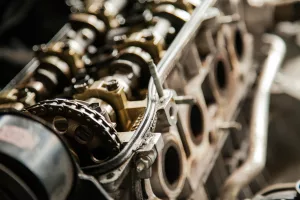American cars have often been criticized for their lack of reliability compared to vehicles from Japanese and European manufacturers. The perception of unreliability, which has persisted for decades, is rooted in several factors, including inconsistent quality control, outdated engineering practices, and poor management decisions by the “Big Three” automakers—General Motors (GM), Ford, and Chrysler. In this detailed exploration, we’ll break down the key reasons behind the decline in reliability of American cars, with historical context, specific examples, and a discussion of how these challenges have shaped the reputation of American vehicles.
1. Inconsistent Quality Control and Manufacturing Standards
Historical Decline in Build Quality
The decline in the reputation of American car reliability began during the 1970s and 1980s. This period, often referred to as the “Malaise Era,” saw a drop in the overall quality of vehicles produced by the Big Three automakers. As consumer preferences shifted rapidly due to the 1973 oil crisis and rising fuel costs, American manufacturers were caught off-guard and struggled to adapt quickly. The rush to meet new demands led to compromised quality and hasty production techniques.
The Chevrolet Vega is a prime example of a vehicle that suffered from these quality issues. Introduced in 1970 as GM’s response to small, fuel-efficient imports, the Vega was plagued by problems, including engine failures, rust issues, and poor assembly. Within a few years, the Vega developed a reputation for being unreliable, contributing to GM’s declining market share.
Cost-Cutting Measures and Outsourcing
To remain competitive with Japanese imports, American automakers adopted aggressive cost-cutting measures in the 1980s. This involved sourcing cheaper parts from multiple suppliers, which led to inconsistent build quality. As companies prioritized reducing costs, they compromised on material durability, leading to cars that frequently required repairs.
The Chrysler K-cars (such as the Dodge Aries and Plymouth Reliant) introduced in the early 1980s were designed as affordable, mass-market vehicles. While they were successful in saving Chrysler from bankruptcy, they were built with low-cost materials, leading to frequent breakdowns and long-term reliability issues.
2. Design Priorities: Style Over Substance
Emphasis on Power and Size
American automakers traditionally focused on producing large, powerful vehicles with V8 engines. This emphasis on size and power over efficiency and refinement led to cars that were often prone to mechanical issues. While these vehicles were popular for their muscle and performance, they lacked the engineering precision found in European and Japanese competitors.
The Ford Mustang II, released in 1974, was a downsized version of the iconic Mustang designed to respond to the oil crisis. However, it retained many of the engineering problems associated with earlier American muscle cars, including poor fuel economy and subpar handling, which negatively affected its reliability and consumer perception.
Flashy, But Poorly Executed Designs
American carmakers frequently introduced new models with flashy designs intended to attract attention. However, these designs often lacked the refinement and longevity needed to establish a reputation for reliability. In contrast, Japanese manufacturers like Toyota and Honda focused on incremental improvements, leading to cars that offered steady, dependable performance.
The Cadillac Cimarron, introduced in 1982, was GM’s attempt to compete with European luxury compacts like BMW. However, it was essentially a rebadged Chevrolet Cavalier with some added luxury features. The result was a poorly engineered car that failed both as a luxury vehicle and in terms of reliability, tarnishing Cadillac’s reputation in the process.
3. Slow Adoption of Technological Advancements
Resistance to Change and Stagnation
While European and Japanese automakers were quick to adopt new technologies like fuel injection, turbocharging, and multi-valve engines, American companies lagged behind. Instead of refining and upgrading their engines and drivetrains, many American manufacturers stuck to outdated designs that were less efficient and more prone to failure.
Throughout the 1980s, GM persisted in using the dated “Iron Duke” inline-four engine in many of its vehicles, even as competitors introduced more advanced and reliable alternatives. The Iron Duke was known for its lackluster performance, poor fuel economy, and frequent mechanical issues, reflecting the stagnant state of American automotive engineering during that era.
Poor Execution of Advanced Technologies
When American automakers did introduce new technologies, they were often poorly implemented, leading to reliability problems. For example, complex electronic systems and early computerized controls were hastily added to vehicles without thorough testing, resulting in frequent malfunctions.
The Cadillac V8-6-4 engine, introduced in 1981, was a pioneering attempt at variable displacement technology, which could deactivate cylinders to save fuel. However, the system was riddled with problems due to immature electronics and poor reliability, leading to consumer dissatisfaction and high maintenance costs.
4. Competition from Japanese and European Manufacturers
The Rise of Japanese Reliability
Japanese automakers like Toyota and Honda made their mark in the U.S. market by offering vehicles that were simple, reliable, and economical. They focused on quality control and long-term dependability, which stood in stark contrast to the reputation of American cars at the time. The Toyota Corolla and Honda Accord became benchmarks for reliability, earning consumer trust and loyalty.
The 1983 Honda Accord quickly became a best-seller in the U.S. due to its consistent reliability, fuel efficiency, and build quality. The Accord set a new standard for what consumers expected in a reliable car, putting pressure on American automakers to improve their own products—often without success.
German Engineering and the Prestige Factor
German manufacturers like BMW and Mercedes-Benz also played a role in shaping consumer perceptions of reliability. German engineering became synonymous with precision, while American cars were seen as clunky and outdated. Although German cars are often more expensive to maintain, their reputation for performance and build quality made them more desirable to many consumers.
The Mercedes-Benz W123 series (produced from 1976 to 1985) is legendary for its durability and build quality. In comparison, American luxury cars from the same period, such as the Lincoln Continental, struggled with inconsistent quality and frequent mechanical problems, contributing to the decline in the market share of American luxury vehicles.
5. The Legacy of the Malaise Era and Brand Damage
The Lingering Effects of the 1970s and 1980s
The reputational damage inflicted by poorly built American cars of the 1970s and 1980s created a lasting perception of unreliability. Vehicles from this era were notorious for rust issues, frequent breakdowns, and a general lack of refinement. This period left a deep mark on American brands, and even as they improved in later years, the stigma of unreliability remained.
The Ford Pinto, infamous for its safety issues and subpar build quality, epitomizes the problems faced by American automakers during this time. The Pinto’s design flaws, particularly the risk of fuel tank explosions in rear-end collisions, became a symbol of corporate negligence and cost-cutting at the expense of consumer safety and reliability.
Struggles to Regain Consumer Trust
Even as American automakers have improved their products in recent decades, the legacy of past failures has been hard to shake. While brands like Ford and Chevrolet have made strides in quality control and engineering, they continue to battle the perception that American cars are less reliable than those from Japan and Europe.
Despite improvements in quality, the Chevrolet Malibu has struggled to overcome its earlier reputation for unreliability. Consumer perception, shaped by decades of subpar models, continues to influence buying decisions even as newer models offer better performance and reliability.
Conclusion: A Complex Legacy of Missed Opportunities and Market Shifts
The perception that American cars are unreliable is rooted in a combination of historical factors, including inconsistent quality control, an emphasis on style over substance, outdated engineering practices, and aggressive cost-cutting. These issues were exacerbated by stiff competition from Japanese and European automakers, who focused on long-term reliability, technological innovation, and consumer satisfaction.
While American automakers have made significant improvements in recent years, the damage done during the 1970s and 1980s left a lasting impact on consumer perceptions. Overcoming this legacy requires not just producing better vehicles, but also convincing a skeptical public that the reliability issues of the past are no longer a concern.




